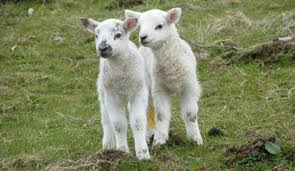Farming

The Alnwick area has been largely agricultural since the cessation of Border warfare in 1603.
The old medieval manner of cultivating open fields where individual holdings were held in the form of separated strips known as “rigs” was already giving way to the enclosure of fields by hedging and ditching together with improvements in methods of farming. After enclosure, uncultivated land was burned to remove heather, coarse grass and bracken, prior to draining and treatment with lime to improve pasture. (Well preserved nineteenth-century lime kilns can be seen at Tosson, built to supply Cragside Estate, and at Low Alwinton for the Biddlestone Estate.)
Land on Alnwick Moor was enclosed so that revenues “should be augmented for the good of the town”. It was then divided into “parcels” of varying sizes, and let by the Burgesses to “such persons as they think convenient”. At Herd’s Close on the edge of town, a house was ordered to be built for a “herd” or herdsman who was allowed to “Enclose a Close” for his own use as part of his salary.
The kind of farming which developed depended on factors such as climate, terrain, type of soil, and local needs. In Cheviot country and the upper reaches of the Aln and Coquet valleys, where the ground collects a lot of rain and the temperature is lower, the land was best suited to hill farming. Temporary huts used by shepherds when flocks moved to summer pasture were called “shiels” hence the names of hamlets such as Linshiels. Shepherds’ houses are still scattered around the hills.
The white-faced Cheviot sheep grazed on grassy high ground, and the Scotch Blackface on the heather-covered hills. Both provided high quality wool as well as meat. In the late 1700s, Cheviot sheep breeders were persuaded to try a Leicester cross, producing the Border Leicester, which became widely used to breed ewes for fat-Iamb production on the lower hill farms. The Swaledale, which can withstand severe weather, was introduced on open hills and heather-covered ground. The hill breeds also provided sheep for fat-Iamb production on lowland farms, and the annual Lamb Sales were important events in the farmers’ calendar. Some crops were grown in the wet uplands, but required drying before milling. A rare example of an early nineteenth-century drying kiln for oats and barley can be seen at Barrow, west of Alwinton.
The climate, temperature and soil in the lower reaches of the valleys, in the central area and the coastal plain, were more suited to the rearing and fattening of stock, and to dairy, arable and mixed farming. Although better known as “sheep country”, cattle were also reared. Chillingham Park is home to the only surviving herd of wild cattle. In later years, store cattle were imported from Ireland for fattening prior to being sent to market. By the mid-1960s, Northumberland as a whole had the largest number of both sheep and cattle in the north of England, and the second highest acreage of grassland.
Dairying was suited to fertile but wetter areas, and to small farms near towns, such as St Thomas’s and Herd’s House at Alnwick, to enable easy distribution. Where the land was drier, dairying or stock rearing were carried out together with crop production on mixed farms.
The rivers which meander through the lowlands of Coquetdale and Alndale contributed to rich, fertile soil for crop growing. The coastal plain was also well suited to arable farming. By the middle of the eighteenth century, agriculture was the main source of employment, and brought great prosperity. When cereal production exceeded local demand, it became necessary to export to other parts of the country. During the 1750s, the “Corn Road” was constructed between Hexham and the port of Alnmouth, by way of Rothbury and Alnwick, to enable the transport of grain for shipping, and to distribute other foodstuffs to local and more distant markets.
Granaries built at Alnmouth were said to be the largest in the country, and around 1826 there were 16 with 10 small vessels owned at the port for use in grain trading. In the mid-1800s, the repeal of the Com Laws allowed large amounts of grain to be imported, thus undercutting the price of home-produced grain. This, together with the advent of the railway, resulted in the decline of the grain trade from Alnmouth. A further decline took place in the 1870s by which time thousands of acres of arable land had reverted to grass. The granaries in Alnmouth were later converted to houses, and one became a church for a period before becoming the Village Hall.
Fewer women, known as “bondagers”*, were employed in agriculture after the mid-1800s, but they continued to supplement the family income with occasional work at harvest time, picking potatoes and other vegetables, gathering sheaves of corn and helping at hay-making. The lives of the farm workers or “hinds” began to change as harvesting became mechanised by the early 1900s. Until then, most farms belonged to landlords who did not actually farm themselves, some being owners of large estates. Although farmers began to buy their own farms, the proportion of tenant farmers remains high in our area
*See the fascinating illustrated book “The Bondagers” on sale in our shop

